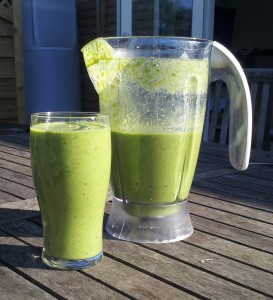If you’ve been following this blog for a while you’ll know that my daughter and I follow a gluten free diet (Our experience of going gluten free), and in my last post Dairy Difficulties I talked about our recent experiments with my son, and how he appears to tolerate gluten, but have problems digesting dairy.
With the recent improvements in my health I have been considering testing whether I react to gluten by doing a gluten challenge (eating it and seeing what happens). I didn’t want to do this earlier, because I was still regularly having “bad days” and I wouldn’t have known whether any symptoms were from eating gluten, or a bad ME/CFS day. However, I am reasonably stable day to day now, so I thought I could differentiate between a gluten reaction and my everyday healthy feeling.
I’ve been waying up the pros and cons for a while, and I’ll summarise them as:
My reasons for trying gluten are:
- I’ve never had a test that showed I was sensitive to gluten
- I may never have had a problem with gluten, my avoidance of it may not have been part of the reason for my recovery, and I may not need to avoid it at all.
- I may have been gluten intolerant, but my gut has now healed and I can tolerate it again.
Reasons for continuing to avoid gluten and not try it are:
- I could be coeliac, in which case even a small amount of gluten will be doing long term damage to my body. My daughter has the gene for coeliac disease, so there is a higher than average chance of me also having this gene. My blood test for coeliac disease was negative (As was my daughter’s and son’s) but this test generates false negatives, so you can get a negative result but still have coeliac disease). It’s also possible to have “silent coeliac disease” with no gastrointestinal symptoms.
- I could be intolerant, and spend several hours/days feeling ill following eating gluten.
Having decided to go ahead, last Saturday evening, whilst my daughter was away (I don’t want her to experiment like this because I’m pretty sure it would not be good for her health) I had a tortilla with a normal, wheat containing wrap.
Saturday evening and Sunday morning I felt fine, however Sunday afternoon and Monday morning I was very fatigued and also light headed. It thankfully cleared by Monday afternoon, after a restful morning, but it was an unwelcome reminder of how I used to feel all the time. Unfortunately, having said that I could distinguish between the effect of gluten and ME on my body there is another variable to throw into the equation. I had my period at the same time (I should have thought of this and waited until that was out of the way to try gluten). Whilst I haven’t been affected during my period for quite a while, I have been in the past, and I know it is a natural low point of the month for many women.
I felt OK on Tuesday and Wednesday, and then had two more “bad” days on Thursday and Friday – feeling more fatigued than usual and the general malaise that it so common, yet so hard to describe. Again I don’t know if this is related to the gluten, or perhaps I was fighting off a cold that my kids have had.
So the results of my experiment are inconclusive. I definitely felt worse than usual after ingesting the wheat wrap, but I can’t be sure that how I felt was due what I ate. I’ve realised that there are always other variables at play. If I’m going to test this properly I think I need to consume gluten at every meal for a few days until either I feel ill or I remain fine. The thought of possibly deliberately making myself ill scares me. It has taken a long time to get to this state of health, and how I felt last week was a most unwelcome flashback. For that reason I’ve decided not try this at the moment.
Additionally my son has had another run of tummy aches, so it seems dairy free is not the whole answer to his issues. We are going back to the doctor about his symptoms, but even my husband (who is extremely sceptical about the negative effects gluten can have) has suggested perhaps we should try removing gluten again. However, this is not something we’re going to rush into, so we’ll wait and see what the doctor says first.
What would you do in my position?




